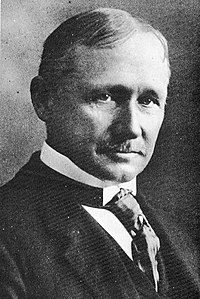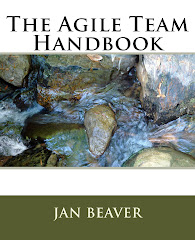 So who was Frederick Winslow Taylor and why is he haunting my blog? Taylor, 1856-1915, was an American mechanical engineer and among the first practitioners of the management consulting profession. So much for the "who" part of the opening question. The haunting part is more complex. Taylor not only haunts my blog, he has haunted my entire working life and certainly the the working lives of countless millions around the world.
So who was Frederick Winslow Taylor and why is he haunting my blog? Taylor, 1856-1915, was an American mechanical engineer and among the first practitioners of the management consulting profession. So much for the "who" part of the opening question. The haunting part is more complex. Taylor not only haunts my blog, he has haunted my entire working life and certainly the the working lives of countless millions around the world.How could one dead white guy have that much influence, you might ask? The answer lies in a paper Taylor presented to the American Society of Mechanical Engineers (ASME) in 1911 and later published as a short book. Both presentation and book bore the title: The Principles of Scientific Management.
Taylor's purpose was to explore President Theodore Roosevelt's call to increase national efficiency and was a part of the larger efficiency craze sweeping the United States in the early twentieth century. William Howard Taft was president of the US in 1911, when Taylor presented his findings and prescription for industrial efficiency, but no matter.
Taylor set out to use the scientific method (or just "science!" as Thomas Dolby sang back in the 1980's) to secure maximum prosperity for both employer and employees by developing each employee to a state of maximum efficiency in the highest grade of work for which each employee was suited. Taylor was speaking of manual labor, both skilled and unskilled, of course, since there was no such thing as a "knowledge worker" in that day and age.
Taylor's observations of working people led him to the conclusion that any "work gang" left to its own devices would work only at the level of its least efficient member. In those days, the term for slowing work to that level was "soldiering." Taylor understood that the workers engaged in soldiering to protect their own interests against what he called "defective management practices." Workers believed, and as it turned out rightfully so, that broad increases in productivity would lead to mass unemployment, then as now, the scourge of the American economy. More on that in a later installment.
Taylor identified the key elements of labor inefficiency:
- Workers use rule-of-thumb practices handed down through observation of their peers. There were no standardized practices even within the same trade within the same company. Management does not know how the work is done and therefore leaves the heavy responsibility for figuring out how to do the work up to the workers themselves.
- The worker best suited for a particular job is incapable of understanding the scientific laws governing the most efficient way to complete the work. Taylor stated that it was the duty of management to take on half the workload by deriving those very scientific laws and then providing the resulting information and training to the workers.
More on Taylor's ideas next time.
All for now....
..-.-
References
Taylor, Frederick Winslow, The Principles of Scientific Management. New York & London: Harper, 1911, reprint edition, 1934.






No comments:
Post a Comment